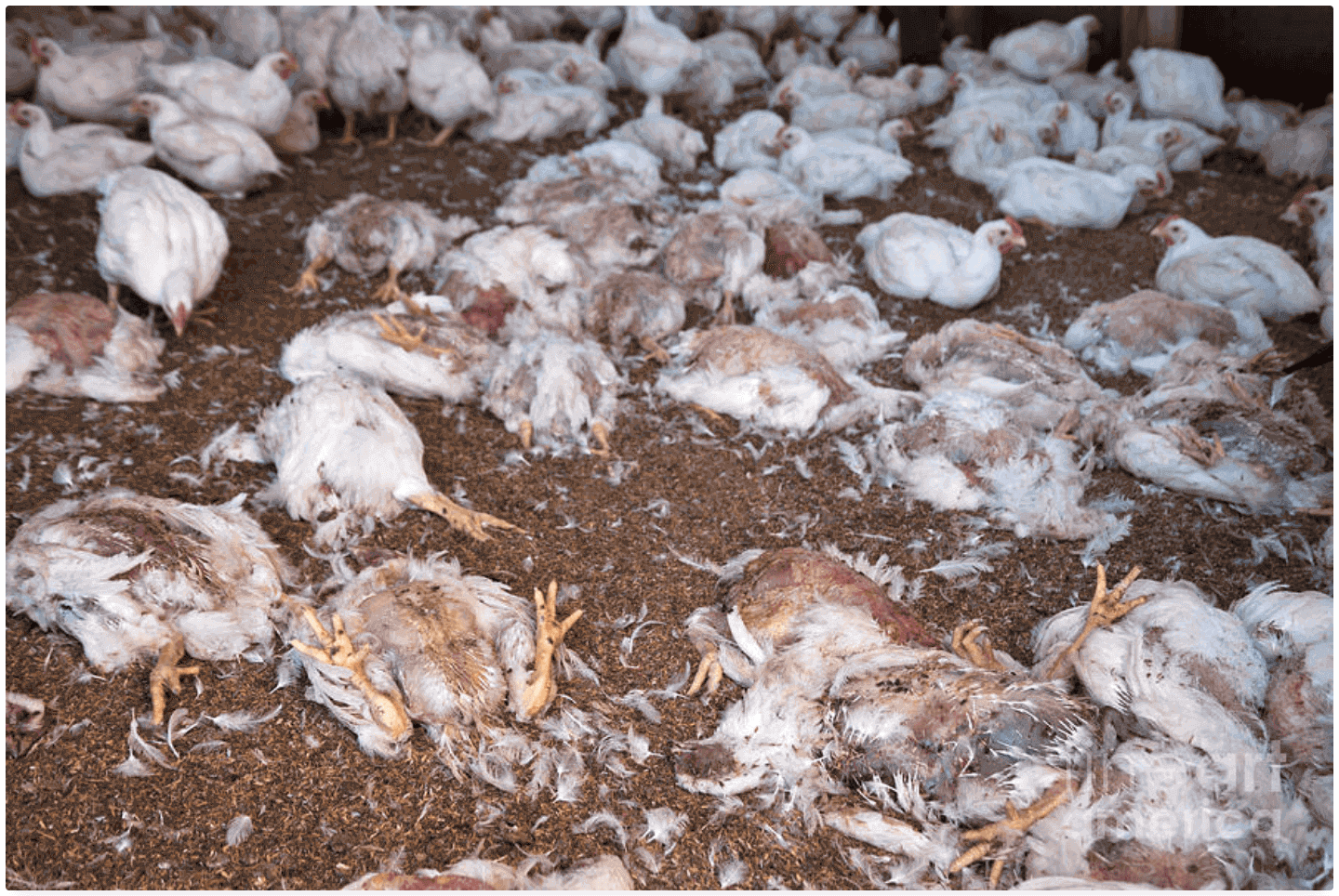Poultry mortality rate, also referred to as flock mortality, is the percentage of dead birds in a flock. It is worth noting that, with all conditions being equal, different poultry breeds have different mortality rates.
Flock suppliers provide a poultry mortality rate benchmark, that coincides with proper housing conditions, feeding and vaccination. Therefore, a farmer can use such information to determine whether the flock lives up to that benchmark.
What is poultry mortality rate
Poultry mortality is the number of birds that have died from a flock, usually expressed as a percentage, and referred to as mortality rate. For instance, in a flock of 100 birds, a mortality rate of 4% means that 4 birds from that flock have died.
How to track poultry mortality and liveability rates.

Flock mortality is the opposite of flock liveability. As a result, flock liveability is the number of birds that live to full age. Additionally, flock liveability is also expressed as a percentage. From the example above where mortality rate is 4%, liveability rate for that flock is 96%.
A low mortality rate means a high liveability rate, and vice versa.
Causes of poultry mortality
Poor housing and housing conditions
Poor housing conditions result to high mortality rates in a flock. This include:
- Insufficient ventilation
- Poor coop hygiene – allowing pests and other diseases
- Extremely cold or hot housing
- Overcrowding
Poor nutrition: low feed quality, poor hydration
Poor nutrition, that is dehydration and low feed quality can mean a number of things including that the type of feed fed to a flock is:
- Inappropriate for its age and type
- Of low quality and lacks essential nutrients
- Insufficient in terms of unit weight

Poor vaccination implementation
Vaccine application to a flock is poor if it meets the following conditions if prescribed vaccinations:
- Are not administered
- Schedule is not followed to the letter
- Vaccination conditions are not followed
Poultry mortality minimization
Buy a flock with a low mortality benchmark
Since different breeds have different mortality rates, the first thing that you, as a poultry farmer should do is ensure that the flock that you acquire has a low mortality rate benchmark.
Ensure that your chicken house or coop is in optimal conditions
Once you have acquired a flock, it is largely up to you to ensure that your chicken house or coop has conducive conditions for that specific flock.
Coop conditions include ventilation, drainage, heating, safety, and hygiene. Consequently, all these have to be maintained throughout a flock’s life to ensure that flock’s liveability.

If unsure of what conditions are conducive for your flock, consult with a certified veterinary or with your flock supplier. Read more on poultry biosecurity.
Adhere to prescribed feeding schedule
You can obtain your flocks feeding schedule from your flock supplier, feed supplier or veterinary. Thus, following the feed schedule as prescribed ensures that your flock has sufficient feed amount, and feed quality, throughout its lifetime.
Additionally, ensuring that there is sufficient and clean water for your flock ensures high liveability.
Adhere to prescribed vaccination schedule
Vaccination schedule are usually obtained from the flock supplier, usually along with the feeding schedule.
A vaccination schedule details the vaccines to be administered to a specific flock, at what age, and under what conditions. Following respective vaccine schedule ensures high liveability rates in a flock.
Lastly but not least, if unsure of what vaccines to administer, when, and how, you can always consult your flock supplier, and certified local veterinary for advice.
Key takeaways
- Acquiring a flock with a low mortality benchmark is the first step in ensuring high liveability.
- Optimal coop conditions, and adherence to prescribed feeding and vaccination schedule are important to preventing birds deaths.
- Consult with your flock supplier, and certified local veterinary, if unsure of your farming practices.
- Keeping flock records is essential, in order to determine a flock’s mortality or liveability rates.


One response to “Poultry mortality: How to promote high liveability”
•
[…] Poultry mortality: How to promote high liveability […]